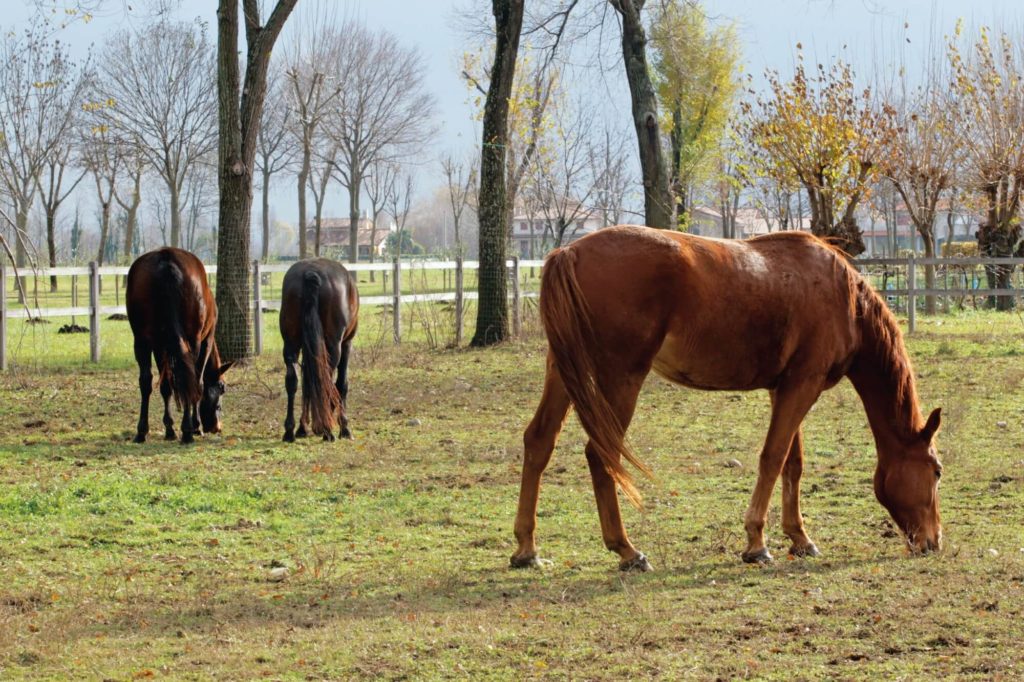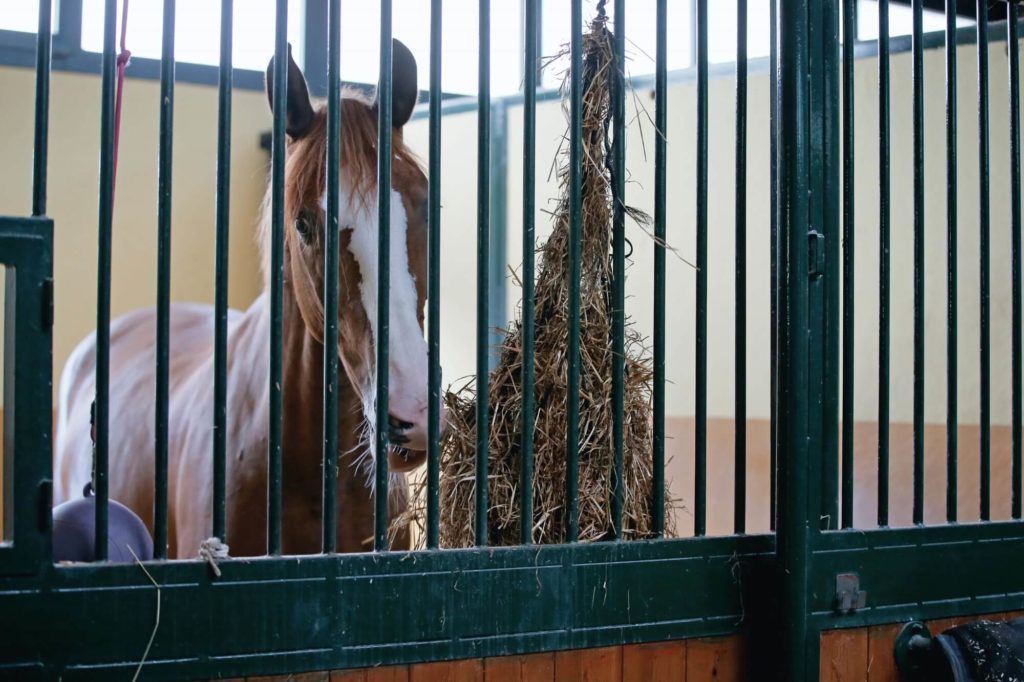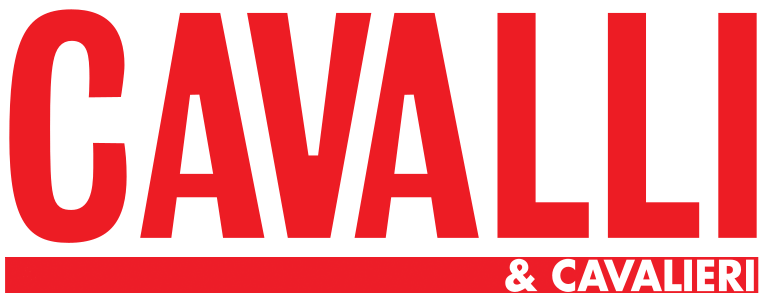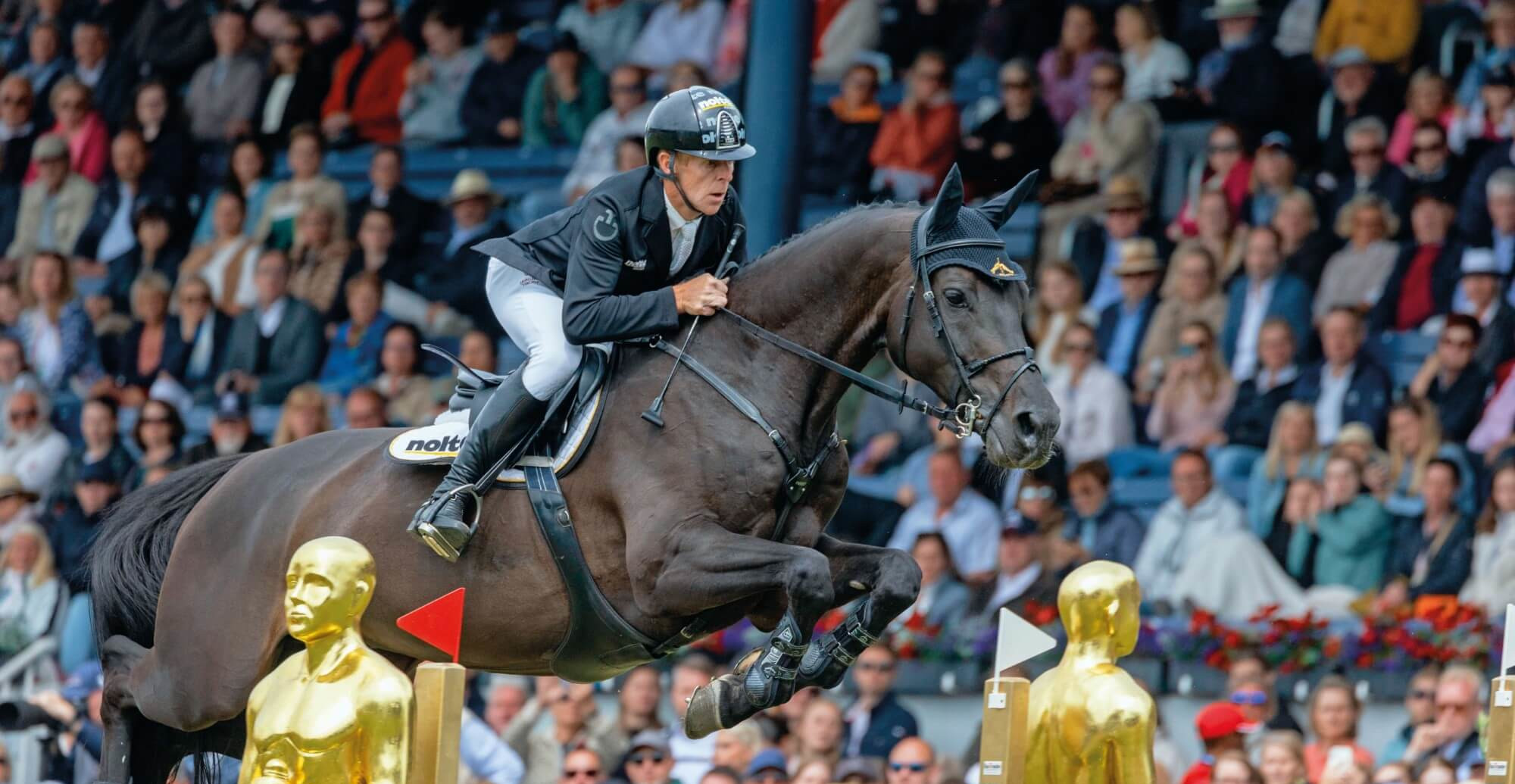Nutrition
How much, when and what… at competitions
The nutritional needs of a competition horse. At competition, a horse needs energy and needs to be well hydrated; his wellbeing must not be forgotten.
Prof.ssa Emanuela Valle
Dip. Scienze Veterinarie – Università di Torino
Full Professor – EBVS® European Specialist
in Veterinary and Comparative Nutrition
In many cases, at the beginning of the competition season, we are led to change the horse’s diet thinking of improving his performance and therefore we often change feed, hay or add a new brand that the horse is not used to.
This does not improve his performance, but creates alterations in the intestinal microbiota, which is very important for the health of the horse.
Its balance is essential to prevent issues such as colic, for the digestion of nutrients and to promote muscle performance. However, when we change feed, we run the risk of destroying the balance of the microbiota and therefore all its potential beneficial effects.
The competition diet must therefore include the feed to which the horse is used to. It may be useful to increase the quantities.
Following the change of environment, travelling and the energy levels required for the performance, the horse may need more calories.
Usually, it is sufficient to increase the feed administered at home by 0.5-1 kg depending on the body condition of the horse. However, in some cases, we can add a highly energetic feed two weeks before departure in quantities between 0.5-1 kg, depending on the horse’s total diet
The Reservoir
Another very important aspect of horse nutrition during competition is to ensure correct hydration.
This should always happen before leaving for the show so that what is called a water and electrolyte reservoir is created in the horse’s large intestine.
Very useful and easy is to feed wet. In fact, for every kilo of feed we can usually supply around 0.6 litre of water.
We can also wet the forage, knowing that 3 kg of hay will absorb about 1 litre of water. Another way to provide more water is to use fibrous mashes.
These often contain sugar beet and/or forage. Small quantities, such as 300 grams per day, may be enough; they can absorb up to one litre, one and a half litres of water.
At competitions, we should always leave a bucket of water available in addition to the automatic drinker (when there is one).
We could also prepare a drink with fresh water, with added fruit and/or vegetables such as carrots and apples or some palatable supplements that encourage the horse to drink.

When to feed?
In the wild, the horse eats small quantities of food, up to 16-18 hours a day.
This is because he has a small stomach, designed not to remain empty.
Therefore, it is necessary that, even when we ride, the horse always has a small amount of forage in his stomach.
A useful strategy is to provide a narrow mesh hay net (2×2) cm with 1-2 kg of forage, so that the horse nibbles instead of eating too fast until about an hour before being ridden.
We can also take him grazing so that he becomes familiar with the environment while doing his favourite thing: eating grass.
In some cases, for horses prone to gastric ulcers, it may be useful to administer alfalfa chaff (about half a kg) 30 minutes before exercise.
The feed, however, must be administered three and a half or four hours before exercise, otherwise we will have a peak in insulin which does not facilitate the metabolic response necessary for high intensity physical exercise.
If he doesn’t eat during the competitions
A new place, unusual smells and different routine can lead the horse to be more nervous and stressed, especially those who are already sensitive, and therefore to have a reduced appetite.
If the horse does not eat his usual amount of hay and feed, he will not get enough energy.
This can also depend on stress and for this reason it is a good idea to talk about it with our vet, who may recommend, for example, using gastroprotectors for the stomach.
For horses that always eat small amounts and do not seem to have health problems, it is a good idea to use very palatable feeds even at home, which contain a little alfalfa and a light molasses.
We can also make the feed more palatable by adding small amounts of their favourite fruit or vegetables and by getting them to eat some grass..
Which supplements to use?
- Elettroliti: per reintegrare le perdite causate dalla sudorazione (si possono aggiungere anche due cucchiai di sale da cucina). Somministrarli da due giorni prima del viaggio fino al rientro in scuderia (non somministrare elettroliti in pasta ai cavalli che soffrono di gastriti).
- Electrolytes: to replenish losses caused by sweating (we can also add two tablespoons of table salt). Administer them from two days before the travelling until back from the competitions (do not administer electrolyte paste to horses suffering from gastritis).
- Adjuvant: of gastric activity: they act as direct buffers against hyperacidity, which contributes to the formation of ulcers; these need to be administered from departure to return to the stables.
- Energisers: help support performance. Maltodextrins and branched chain amino acids must be given no more than twenty minutes before exercise, only if the horse has been drinking and, in any case, according to the manufacturer’s instructions.

What hay do I use for the competition?
It is often not possible to bring home forage to the competition due to space issues.
The best solution is to use small bales.
Today there are many on the market and we can start using them about ten days before the competition, perhaps 50% of the usual hay and 50% of the product we will bring with us at the show.
We can also use smaller bales, 18-20 kg, from local farmers.
If we don’t have much space available in the horsebox and we have no choice apart from using the hay supplied during the competition, we try to at least give 30% of the hay that the horse usually eats at home.
It is absolutely necessary to avoid changes in forage on competition days or administering completely different hay, such as switching from hay to a hay ledge.




